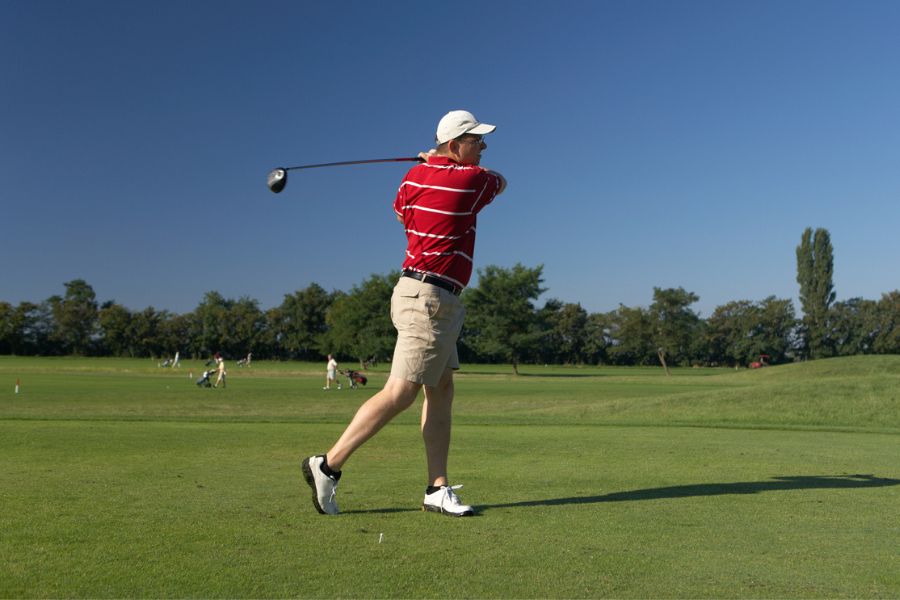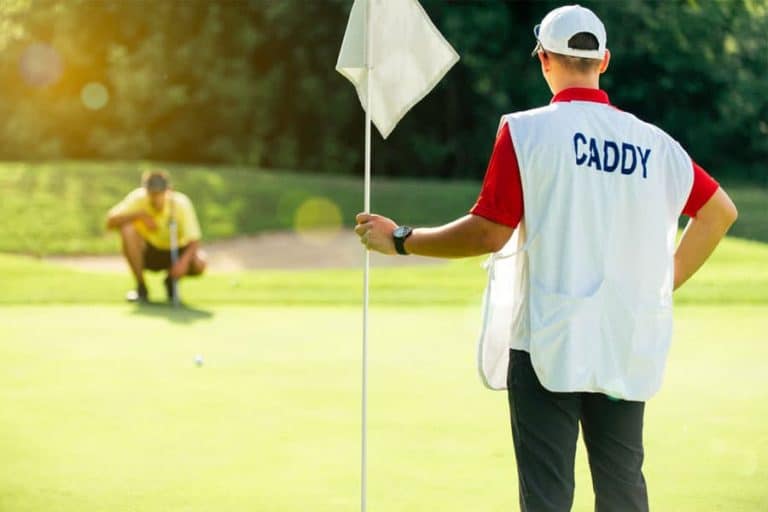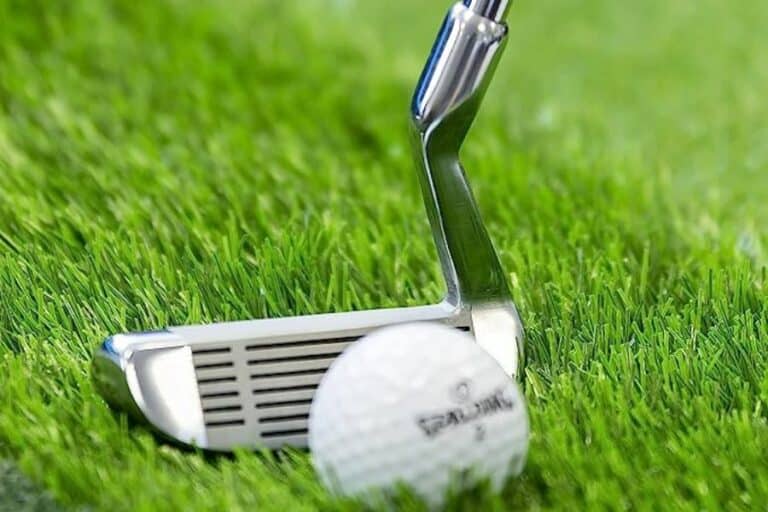How To Drive A Golf Ball – 13 Steps To Follow

Learn to drive a golf ball with confidence and consistency by following these 13 easy steps. Take your game to the next level by understanding the mechanics of a proper golf swing, including grip, stance, body alignment and impact.
Driving a golf ball can be intimidating, but with the proper techniques and practice, you can become an expert in no time!
Some simple steps will have you hitting drives off the tee easily on the golf course, whether you’re a beginner or looking to refine your driving technique.
From proper swing tips to optimal driver use, this guide will take you through everything you need to know about how to drive a golf ball.
How to drive a golf ball: Step-by-Step guide
A ‘drive’ is an impressive shot taken from the tee box that moves the ball down the fairway, getting it closer to the green. But how to drive a golf ball straight is one of the most common questions every golfer has.
Here are the steps that you need to follow to drive the golf ball farther:
Step 1: Choose the right club
Select a driver or iron with a proper loft for a perfect golf swing. Also, select anadjustable club for better shot distance and powerful swing. However, golfers with slow swing speed should opt for 11 degrees loft or higher drivers to get a high launch.
Note: The loft, the club head speed, and the golf ball spin affect how fast the ball will travel. These factors create a launch angle and velocity, determining how long the ball will stay airborne. Other elements like clubface grooves and grass that might have gotten between the club face and ball at impact can also contribute to this calculation.
Step 2: Know which ball to choose
When selecting the right golf ball for your game, the spin, hardness, distance, and feel of the ball are all important factors to consider.
The best way to find the perfect golf ball is to visit a local golf shop and speak with an expert who can determine the right golf ball according to your club-head speed. They can suggest the most suitable type of ball with the correct cover thickness and core density for your style of play.
When testing out some golf balls, rely on how they feel as well. Mental confidence in what you’re hitting can significantly influence the outcome of your shot.
Note: Remember, official golf rules do not allow different kinds of balls during one single round. However, if playing socially with friends, you should take numerous types to experiment and discover which works best for you.
Step 4: Select the right tee
While selecting the right tee for your golf game, the size of modern club heads should be considered. The best way to tee up a golf ball is to place it high enough that the top of the driver clubface intersects with its ‘equator.’
If you are looking to hit a long shot on a par 4 or par 5, then using a taller tee is generally recommended. However, if using an iron, it is essential to bring down the tee height and ensure only 1⁄4 – 1⁄10 inch ( 0.64 to 0.25 cm) of the ball is visible above the ground to avoid cutting under when hitting your shot.
Step 5: Setup
The setup fundamentals can differ slightly from other clubs when using a driver. The golf ball should be placed far forward and in line with your front foot, which can be enabled with the help of a high tee.
When the ball position is adjusted correctly, you should tilt your shoulders back from the target so that the shoulder alignment is still parallel to the clubface when hitting the golf ball on an upward angle.
Moreover, position the ball inline with the pocket or logo on your shirt for a successful golf swing and to the target side of your sternum (for a right-handed golfer).
Step 6: Place the legs in the correct position
Hug the middle of your chest with the club, then bow down until the club drops between your legs to get the proper position.
Next, angle away from the target line until it meets your lead leg. This helps you achieve proper bowing posture and a greater launch for drivers. If you tend to strike low golf shots too often, this fundamental setup check could make all the difference.
Note: It’s important to keep your feet at an appropriate distance apart (1.5 ft for iron and 2 ft for a driver) to make good contact and hit the ball before it hits the ground. Lastly, avoid positioning the ball too close to the front of your stance, as this can cause problems with slicing or fading.
Step 7: Stance
Achieving the perfect stance is essential to hitting the ball straight, so make sure your legs are shoulder-width apart, and your knees are slightly bent.
Your shoulders should be positioned inline with your target. Moreover, increasing the width of your feet is a great way to adapt this stance for further distance or more control.
Visualize a line connecting your ball to your target and align yourself so that your legs and shoulders are parallel.
Keep your left arm straight and stretched out in a “V” shape to achieve maximum distance until the very end of your swing. This will help you get more momentum as the club hits the ball.
When it comes to aiming, pick an object slightly past your target as a visual reference point trees are great.
Step 8: Grip pressure
The grip is one of the most important fundamentals when driving a golf ball because it gives you control over the golf club. Your hands should be placed comfortably on the handle.
Generally, golfers tend to choose between the ten-finger grip, overlap grip, or interlocking grip. Each offers its benefits, so experiment until you feel most comfortable. But, sometimes, finding the right way to hold the club can be tricky and may take some time to figure out.
Step 9: Posture
An effective backswing starts with the upper body turning away from the target. Different levels of flexibility will determine how far you can rotate. Flaring your foot can help to increase your range.
If you are limited in flexibility, turn your toes outwards to facilitate greater movement. To ensure a smooth and connected motion, keep your arms connected with your torso as you rotate during the backswing.
Step 10: Swing speed
A successful golf swing plane is circular, and an optimal swing path can maximize your distance. To ensure your club head is traveling on the right path, use an alignment aid outside the golf ball to assist.
Maintaining the right posture, grip, and rotation on the backswing form the foundation for a smooth and powerful impact with the ball.
Having two golf swings, one for power swing and the other for control is essential to hit your shots with exact precision, depending on the situation. To maximize distance, position your head and shaft slightly back from the ball with a wider stance.
When you need more control, narrow your stance so that the ball is positioned forward and the club is slightly choked down. This will help you in situations such as when there are water hazards or doglegs that require greater accuracy in order to hit a successful driver shot.
Step 11: Take a backswing shot
Focus on shifting your weight back when taking the backswing to ensure a successful golf drive and avoid ruining your score.
Avoid swinging too fast, as this can take you out of alignment. For the first 20-25% of the swing, keep the driver close to or skim the grass, not digging it into the ground, to get the desired long and smooth drive.
Once at the top, pause momentarily before continuing with a steady downswing. This hovering at the top will help reset before starting your next movement while maintaining momentum.
Step 12: Downswing
The downswing is all about unwinding the backswing. When you rotate your hips and shift your weight onto your front foot, let the club drop in an arcing motion from over your head so that you hit the ball with your arms straight.
Avoid changing your spine angle; stay in place and focus on the ball — otherwise, you’ll top or fat it. For maximum speed and distance, let the club lag behind the arms, and arms lag behind the lower body in your ideal downswing.
Step 13: Follow through to the finish
Right-handed golfers aim for a swing over the left shoulder; for left-handed golfers, the opposite applies. Take your time looking up to see where you hit the ball – if you’ve made a successful swing and all is as it should be, your ball will travel according to plan.
Conclusion
Learning to drive a golf ball is essential for anyone who wants to improve their game. You can work your way up to hitting more powerful and controlled drives with practice.
Before you do that, however, make sure you have the basics of a good swing down pat, keeping your head down, following through with your shot, and finding your balance while swinging. It may take some time to get the hang of it, but the payoff will be worth it!








